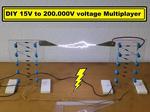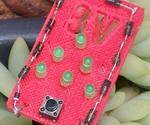Other

“The Cockcroft–Walton generator, or multiplier, is an electric circuit that generates a high DC voltage from a low-voltage AC or pulsing DC. The Cockcroft–Walton generator, or multiplier, is an electric circuit that generates a high DC voltage from …

“This time I share with you an easy STEM project to show the kids how a solar cell works. This little device collects clean renewable energy in the form of sunlight and convert that light into electricity which can then …

